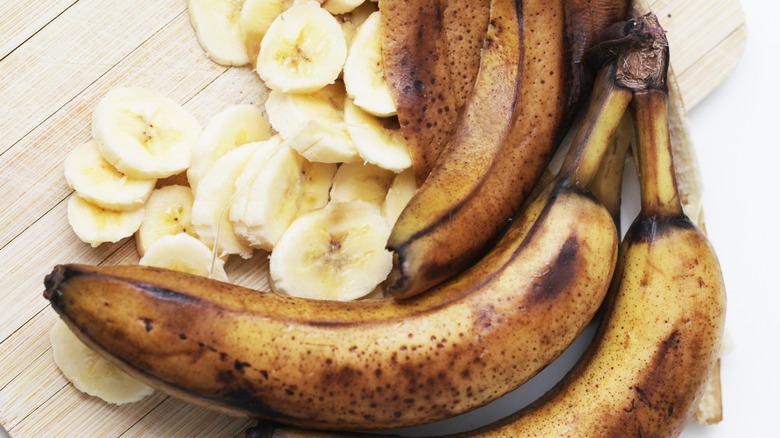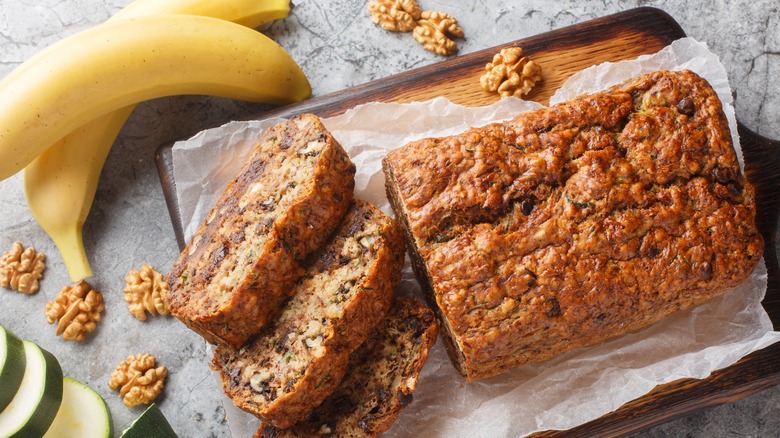The Science Behind Why Overripe Bananas Taste Better In Banana Bread
Bananas are infamous for being ripe one minute, brown the next. But that's good news for home bakers who know that using perfectly ripe bananas is one of many common banana bread mistakes. The soft, sugary flesh of an overripe banana provides the sweetness and moisture that characterize banana bread. And prior to that stage, they may actually ruin everyone's favorite quick bread.
Green bananas are nearly flavorless except for a slight grassy vibe, which isn't really the best flavor profile for a warm loaf of bread. As they ripen, bananas start to become fruitier, going from melon-y to banana-y and sweet by the time they're yellow. That flavor would be okay, if a bit flat, but the real problem is the texture. Ripe bananas are still firm and difficult to smash, which also leads to a less moist bread. But once the brown sets in, the banana's flesh starts to do something beautiful. Like an aged liquor, it starts to develop notes of vanilla, honey, and rum and becomes soft and sweet, perfect for a moist loaf of bread.
That's because bananas go through a lot of chemical changes on their journey to brown. As the banana ripens, it releases ethylene gas, which triggers a rise in the enzymes amylase and pectinase. These two enzymes work in tandem to break down starch and pectin (respectively), making the banana increasingly softer and sweeter as they do. Thus, if you're craving banana bread and have nothing but underripe bananas, you can use this information to your advantage.
How to overripen bananas
There are several methods to increase the amount of ethylene in contact with bananas. Which one you use depends on the banana's stage. Green bananas have a solid, starchy flesh that's completely unsuitable for banana bread. At this stage, all you have to do is pop them in a paper bag and fold over the top. That helps trap the gas close to the bananas and speeds up ripening by several days, ensuring they develop the sugars and texture you need to make stellar banana bread.
Once your bananas turn yellow, you can use heat, which gets them to the right stage in less than an hour. If you've ever grilled bananas for a sweet and smoky banana split, you know heat makes them softer and sweeter because it caramelizes the sugars and further breaks down the starches inside the fruit. To use this method, arrange unpeeled bananas on a baking sheet and bake them in a slow oven (300 to 325 degrees Fahrenheit) until the peels are brown and the flesh is soft and fragrant — about half an hour.
Another method for ripening bananas fast is to freeze them. Seal sliced ripe bananas in a freezer bag and let them freeze solid overnight. The result will be sticky, sugary, mushy bananas ready for baking. Of course, if you freeze too many bananas, you can use the extra to make a delightful banana soft-serve ice cream.

